 |
 |
 |
| |
Cognitive aging in the era of effective antiretrovirals
|
| |
| |
Leah H. Rubin, PhD, MPH Associate Professor of Neurology & Epidemiology
Download the PDF here
Reported by Jules Levin
9th International HIV and Aging Workshop
NYC Sept 13-14 2018
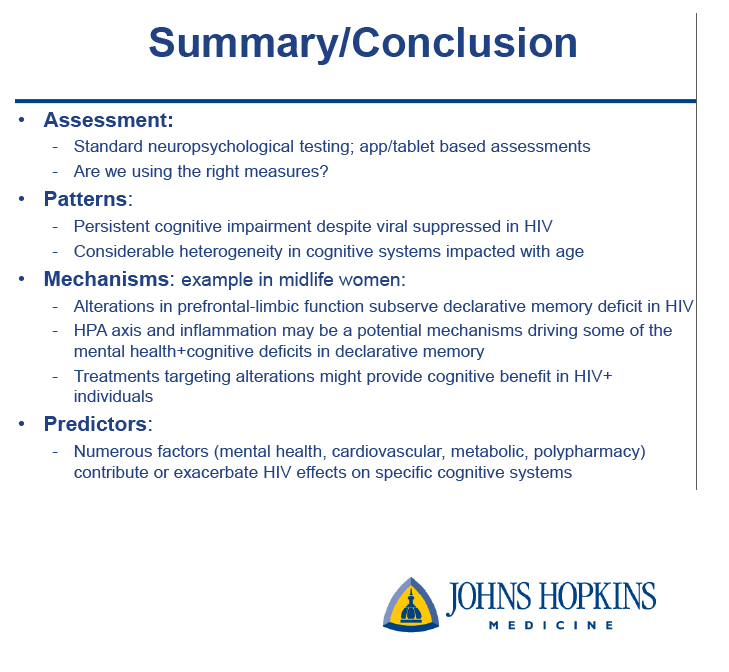
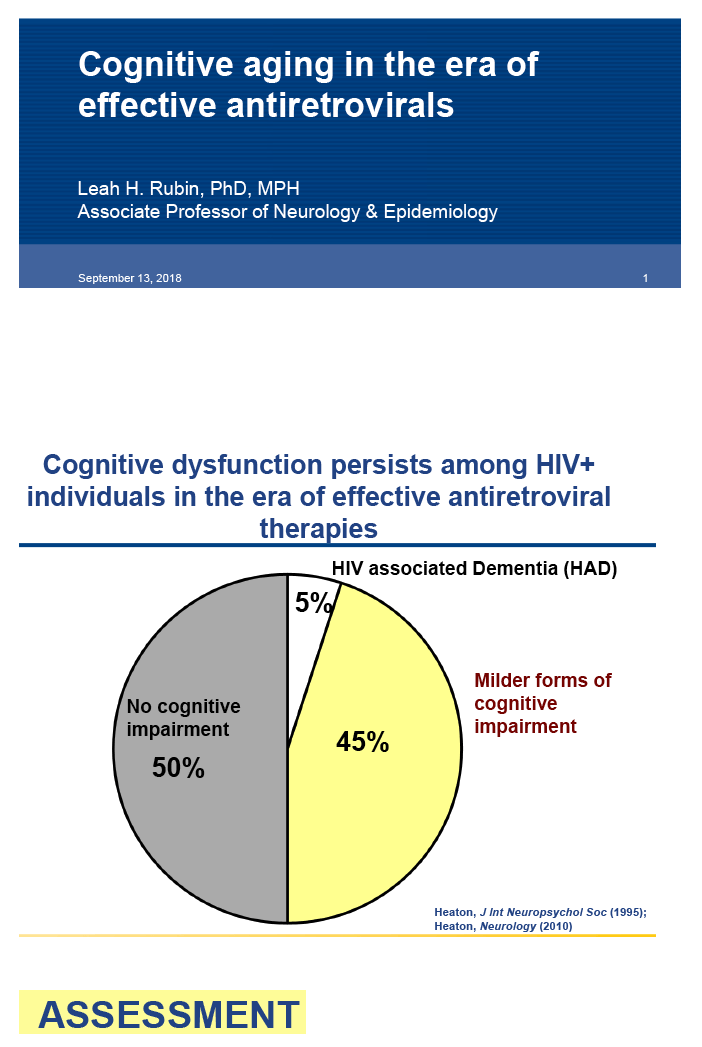
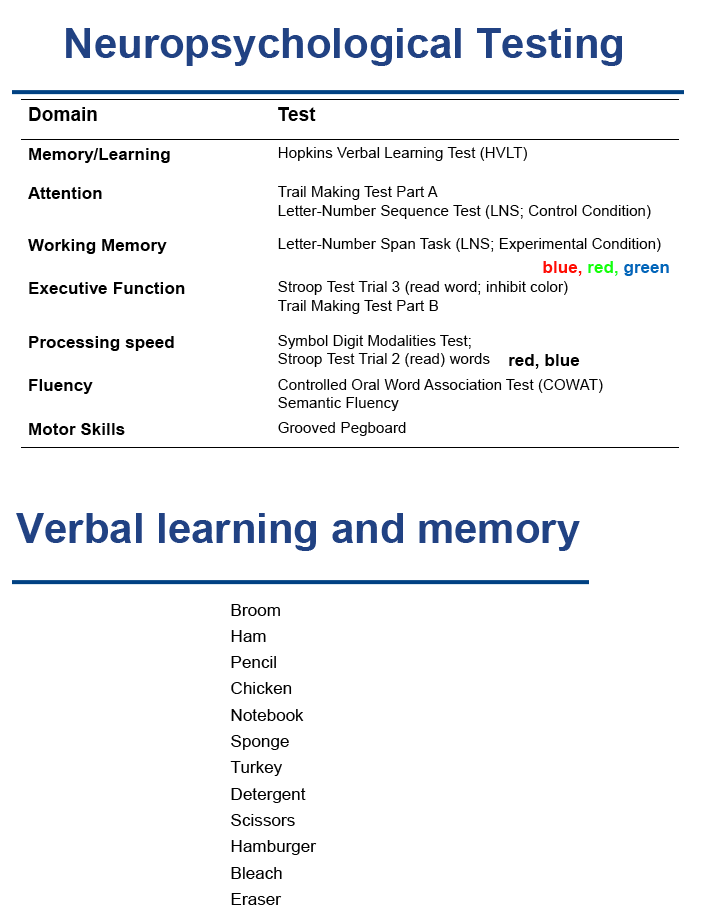
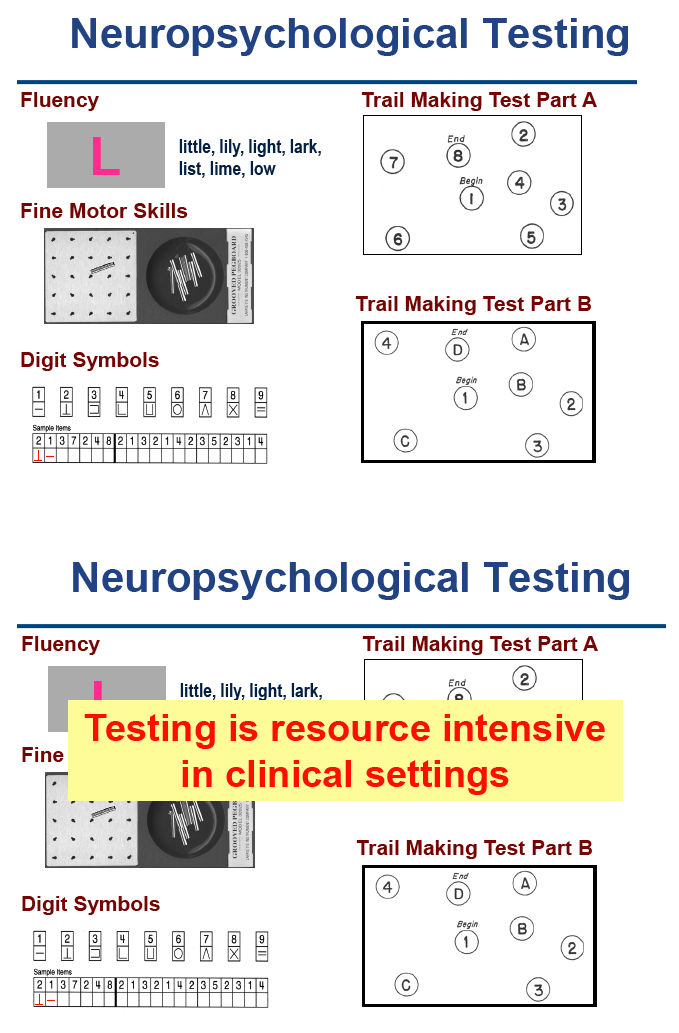
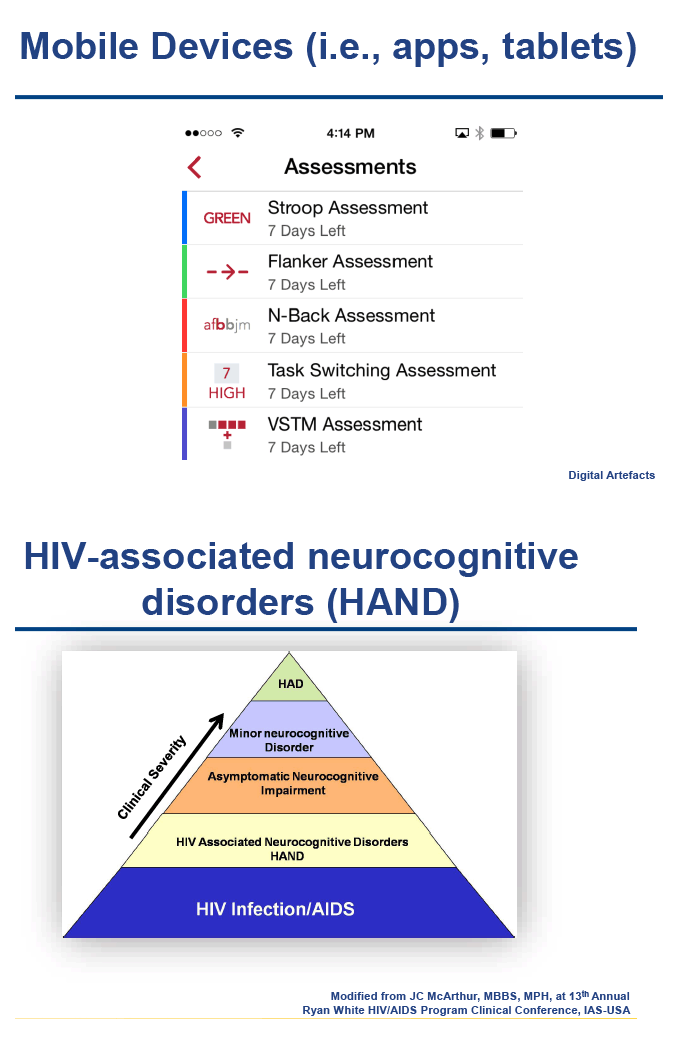
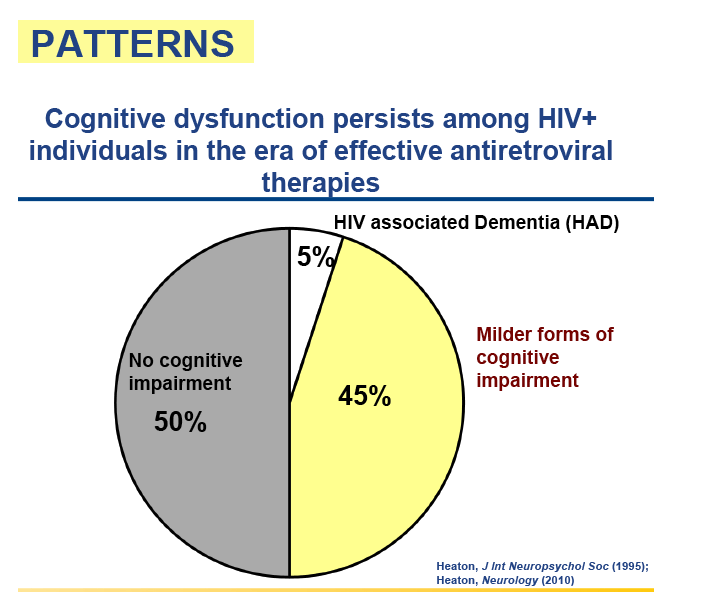
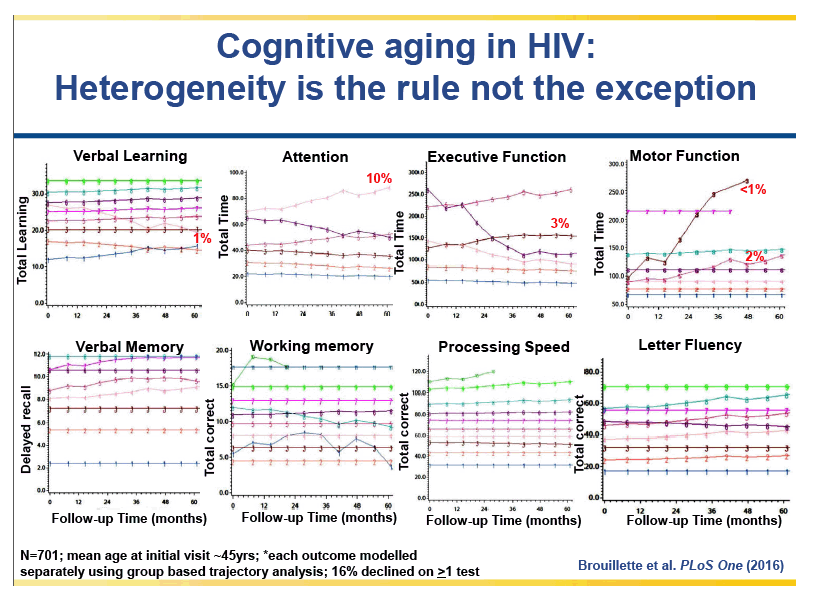
By applying GBTA to detect neurocognitive changes over time in a clinical cohort of people living with chronic HIV infection, we identified distinct trajectories across 15 different NP tests over the course of follow-up. Declining trajectories over the first 36 months were found in 8 of the 15 NP tests. The same individuals were identified as decliners across the two definitions of meaningful change that we employed. Only 15.8% of this sample declined on one or more NP test in the first 36 months of follow-up, somewhat less than the 22.7% rate of decline reported by Heaton et al. among a subset of this sample (n = 436) using a different definition of change (i.e. based on averaging scores of 15 NP tests, and using a regression model to estimate change) [15]. In the wider HIV literature, neurocognitive change has been calculated by subtracting average Z scores from 2-8 NP tests at follow-up, compared to baseline. These major differences in approach make it difficult to compare rates of decline across studies.
https://journals.plos.org/plosone/article?id=10.1371/journal.pone.0155766

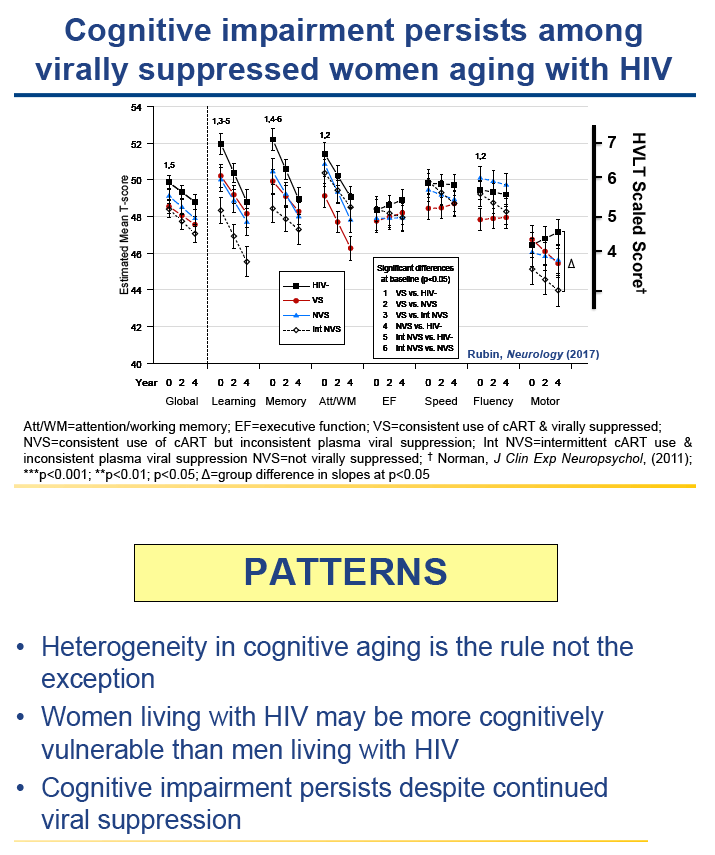
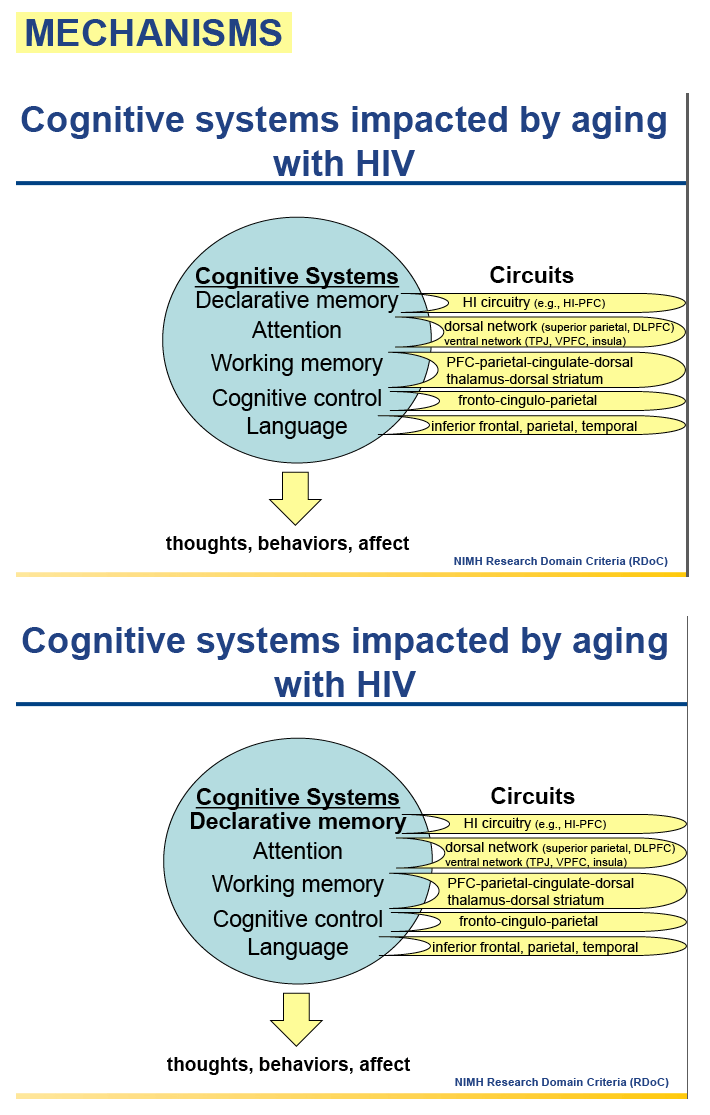
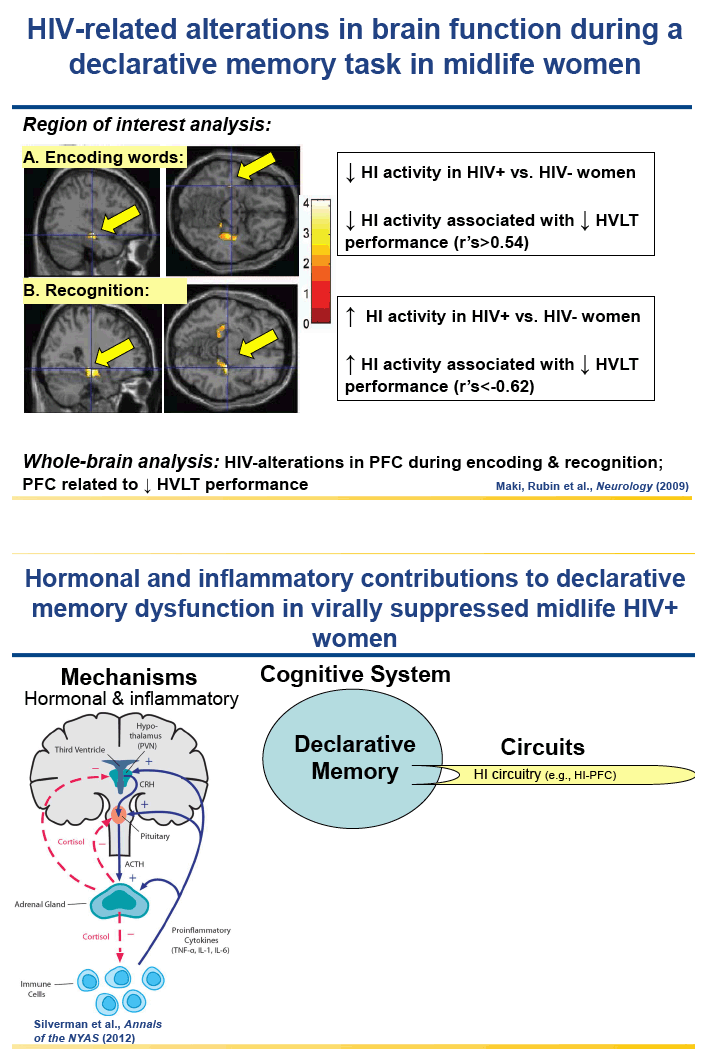
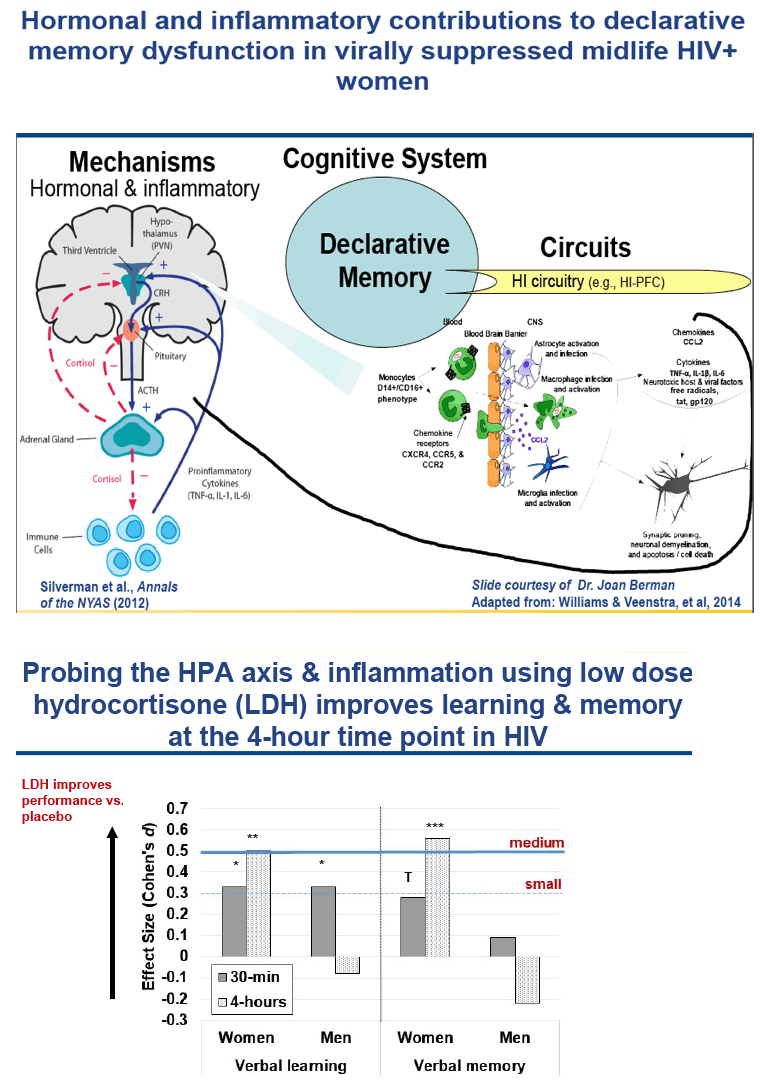
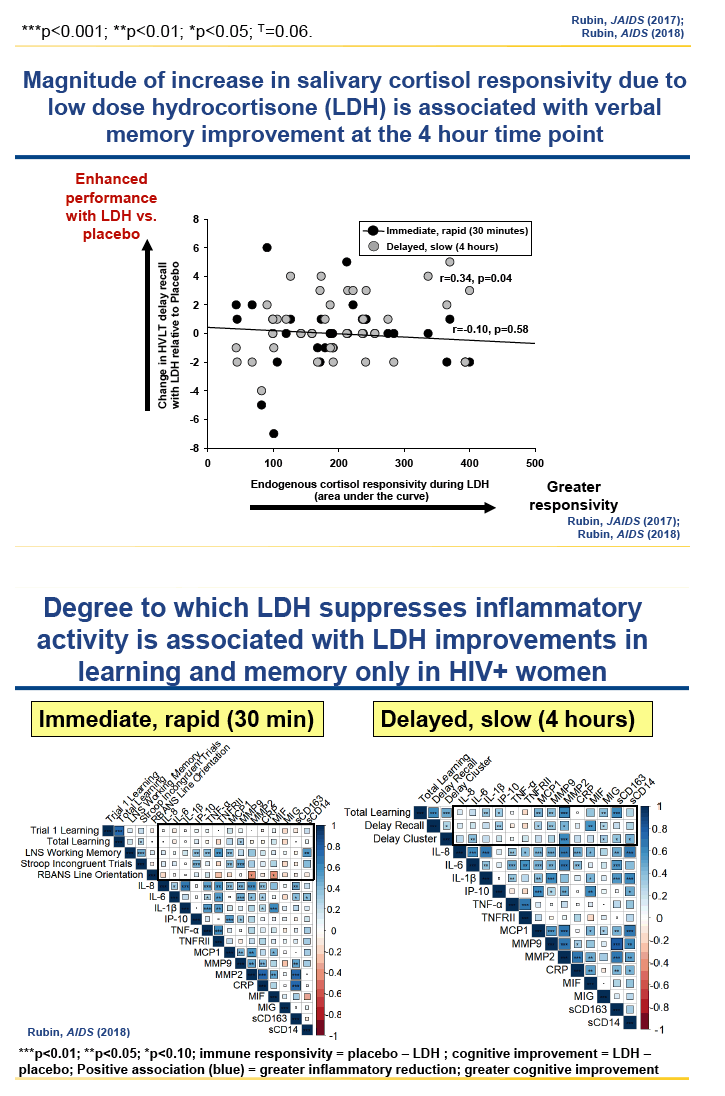

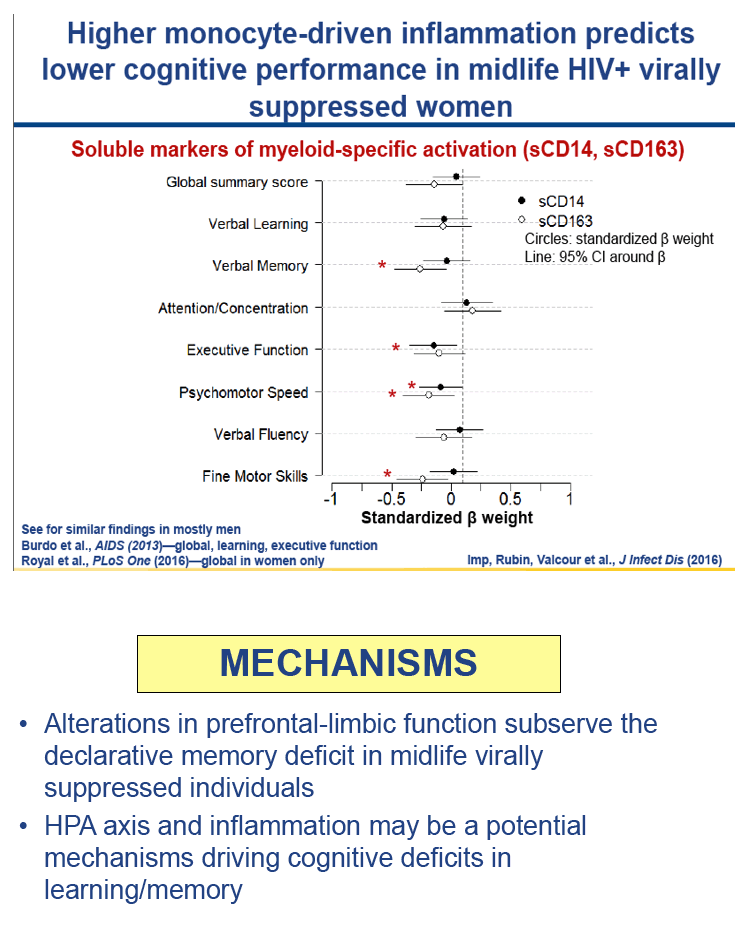


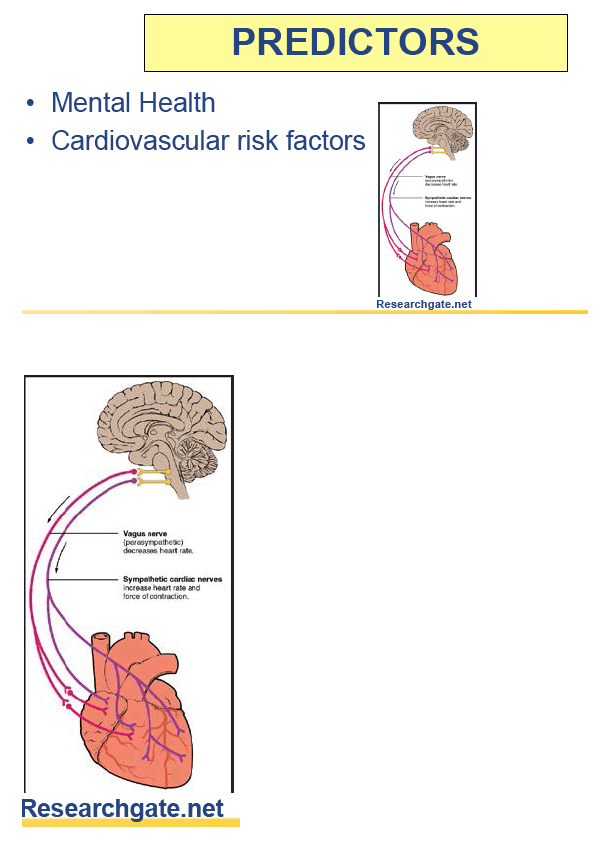
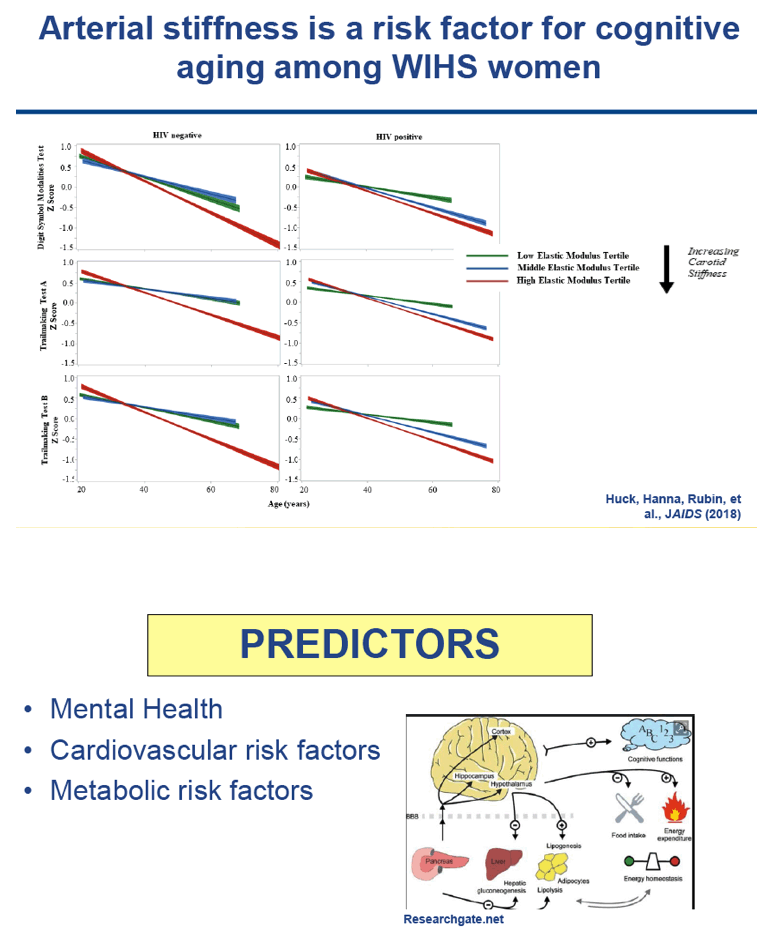
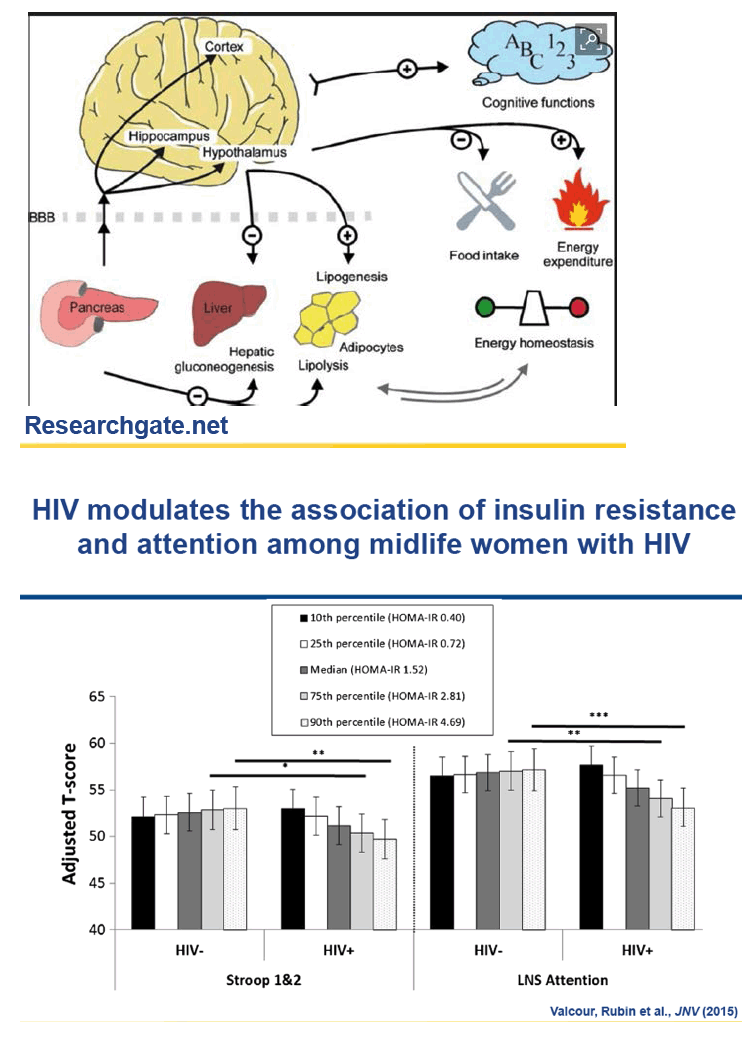

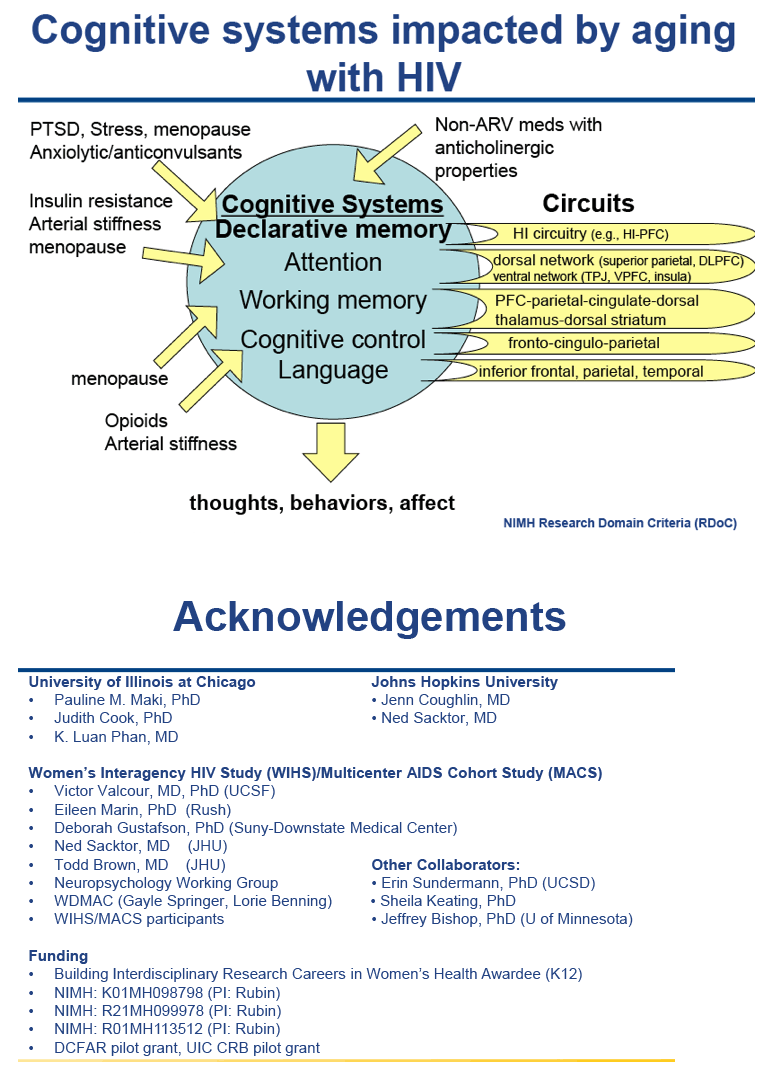
|
| |
|
 |
 |
|
|